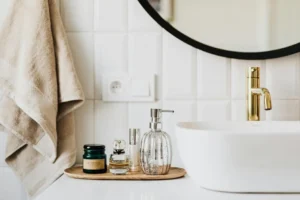Start by thinking about how you want to use each room in your home. Consider factors like the number of bedrooms and bathrooms, the flow of the living spaces, and any specific features or designs you have in mind. It’s essential to be practical and consider your current and future needs when choosing a floorplan. Remember, an efficient and well-designed floorplan will make your dream home a comfortable and functional space for you and your family.
When creating a custom floorplan, there are several design elements to consider to ensure your dream home becomes a reality. Some important factors to keep in mind include:
To achieve the perfect floorplan for your dream home, it’s essential to collaborate with a professional architect or designer. These experts bring a combination of technical expertise and creative vision to ensure that your ideas are translated into a functional and aesthetically pleasing design. They will work closely with you to understand your lifestyle, preferences, and budget, and then develop a custom floorplan that reflects your unique needs. By working with a professional, you can expect to receive personalized attention, expert advice, and a design that meets building codes and regulations. When selecting an architect or designer, be sure to consider their experience, portfolio, and communication style to ensure a successful partnership.
Custom floorplans allow you to create a unique home design tailored to your preferences. When budgeting for custom floorplans, consider the following factors:
Prioritize your preferences and set a realistic budget to ensure that your custom floorplan aligns with your financial goals.
When designing a floorplan, it’s essential to blend functionality and aesthetics seamlessly. A well-thought-out floorplan should not only look beautiful but also cater to the practical needs of its inhabitants. Here are a few key points to keep in mind:
By prioritizing both functionality and aesthetics, you can create a custom floorplan that reflects your unique vision for your dream home.
When it comes to customizing different areas of your home, there are various options to consider. You can personalize the layout and design of each room according to your preferences and needs. Some key areas you may want to customize include the kitchen, living room, bedrooms, and outdoor spaces. For the kitchen, you can choose custom cabinetry, countertops, and appliances to suit your cooking style. In the living room, you can select custom furniture, lighting, and entertainment systems for a personalized touch. Bedrooms can be tailored with custom built-in storage, closet organization systems, and unique decor. Outdoor spaces can be customized with landscaping, patios, and outdoor kitchens to create your ideal environment. Customization options allow you to create a home that truly reflects your individuality and lifestyle.
Technology has revolutionized the traditional process of creating custom floor plans for homes. With the use of advanced software and 3D modeling tools, architects and designers can now bring their designs to life with greater precision and detail. This technology allows for easy collaboration between clients and designers, as well as the ability to visualize the final product before construction even begins. The use of virtual reality and augmented reality also enables clients to experience their future home in a realistic and immersive way, helping them make informed decisions and adjustments to the floor plan before finalizing it.
When creating custom floorplans for your dream home, it’s important to avoid common mistakes to ensure that the end result aligns with your vision. Here are some common mistakes to avoid:
By avoiding these common mistakes, you can ensure that your custom floorplan effectively captures your vision for your dream home.
Custom floorplans are tailored to your specific needs and preferences, ensuring that your dream home comes to life just the way you envision. With a custom floorplan, you have the freedom to design the layout, room sizes, and features that best suit your lifestyle. This allows you to create a unique and personalized space that reflects your individual taste and requirements. Whether it’s an open-concept living area, a spacious kitchen, or a cozy home office, a custom floorplan provides the flexibility to bring your dream home to reality.





